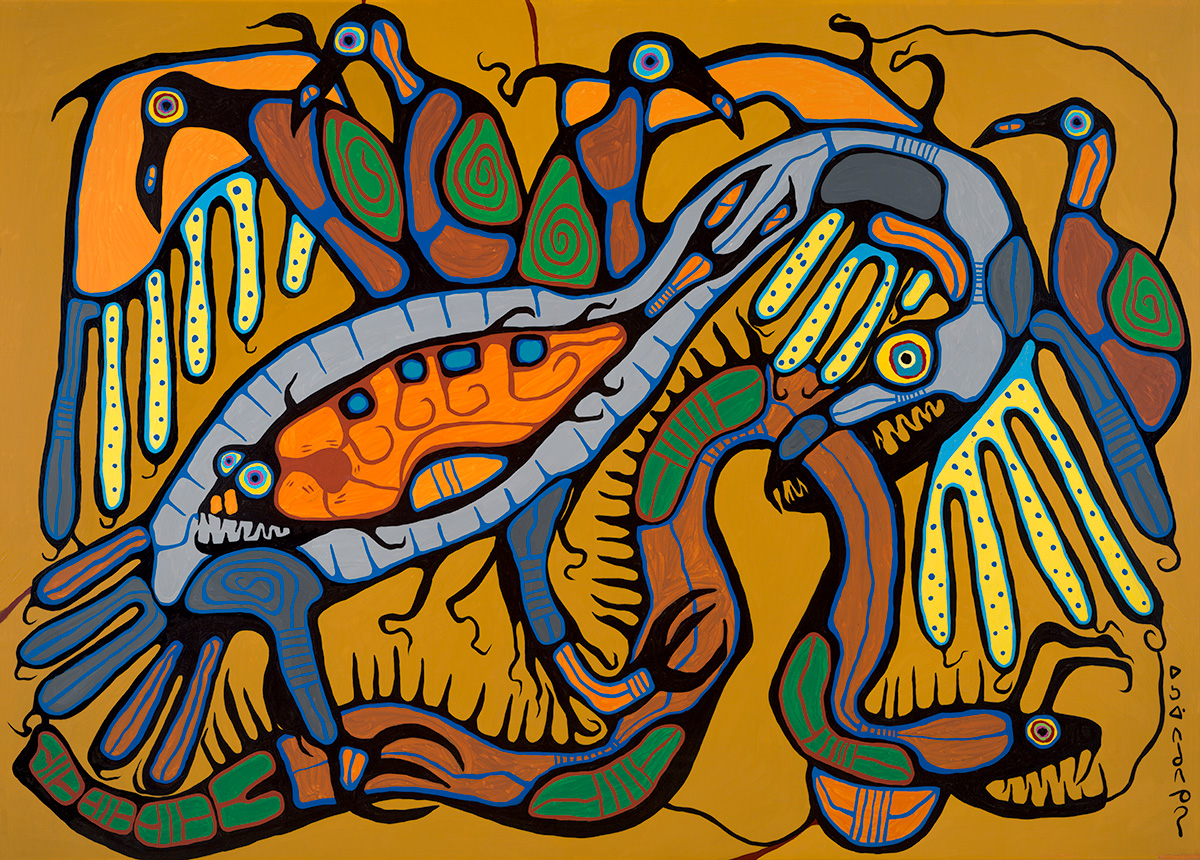David John Voss, who orchestrated the creation of thousands of forged artworks in Thunder Bay, Ont., falsely attributed to Anishinaabe artist Norval Morrisseau, has been sentenced to five years in prison.
Voss, 52, pleaded guilty on June 4 to charges of forgery and uttering forged documents. His operation, which ran from 1996 to 2019, is now recognized as Canada’s largest art fraud case, with over 1,000 counterfeit paintings seized by investigators.
Superior Court Justice Bonnie Warkentin delivered the sentence on Thursday, expressing the profound impact of Voss’s crimes. “The purpose of creating these fake paintings was to gain economic benefit, but in doing so, the legacy of Norval Morrisseau has been irrevocably damaged,” Warkentin stated. “His spirituality has been undermined and tarnished, so today, we have a small opportunity to address this wrong.”
Morrisseau, a celebrated artist from the Ojibway Bingwi Neyaashi Anishinaabek First Nation, passed away at age 75 in 2007. He is known for founding the Woodlands School of Art and had his work exhibited in prestigious galleries across Canada, including Rideau Hall in Ottawa.
“This case represents more than an art fraud; it is an appropriation of the cultural and spiritual identity of one of Canada’s most cherished and esteemed artists,” Warkentin added.
Cory Dingle, executive director of Norval Morrisseau’s estate, spoke in court before David John Voss’s sentencing, highlighting the financial struggles Morrisseau endured in his later years “after a lifetime of giving.”
“We seek not only restitution for the financial damages and ongoing financial burden of the cleanup, but a recognition of the holistic impact this art fraud has had on our lives, on Norval Morrisseau’s legacy, the estate, and on the cultural heritage of Canada,” Dingle said.
“We seek the active involvement of this individual to continue to assist in the identification of the fake paintings he produced.”
Dingle revealed that the estate is facing losses estimated at $100 million due to the art fraud ring, and it could take decades for Morrisseau’s original works to recover their value.
Despite the significant impact, the Crown did not pursue restitution, citing the complexities involved in determining a suitable amount as “unmanageable,” according to Judge Bonnie Warkentin.
Dingle emphasized the estate’s push for reforms in Canada’s Criminal Code, civil code, and copyright act. “We need changes not only to prevent such incidents in the future but also to equip us with the tools necessary to address these crimes,” he stated.



